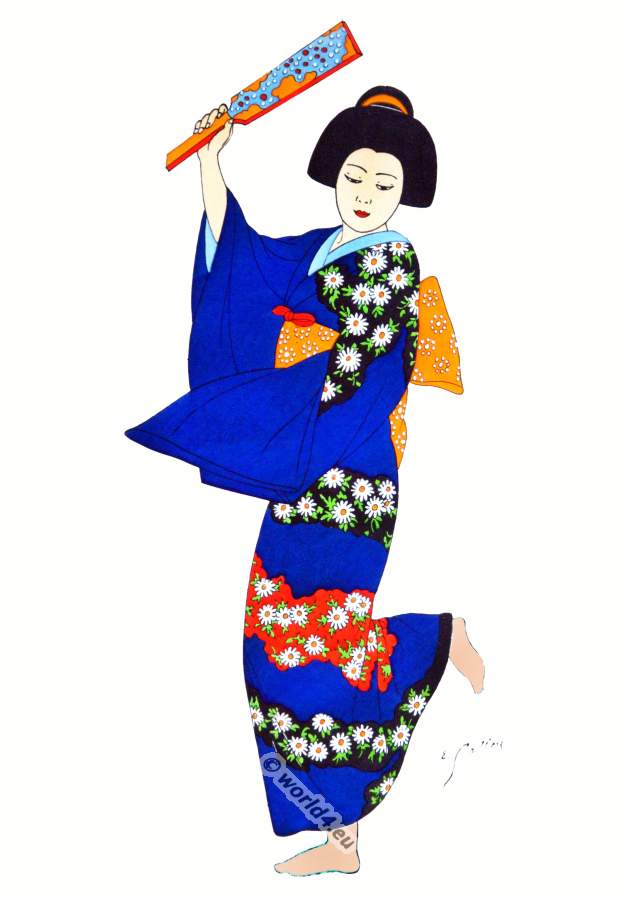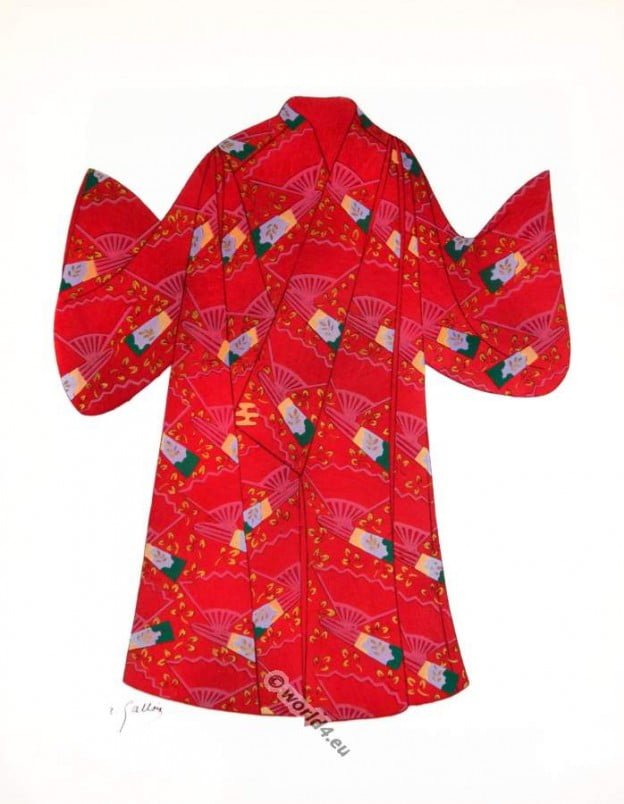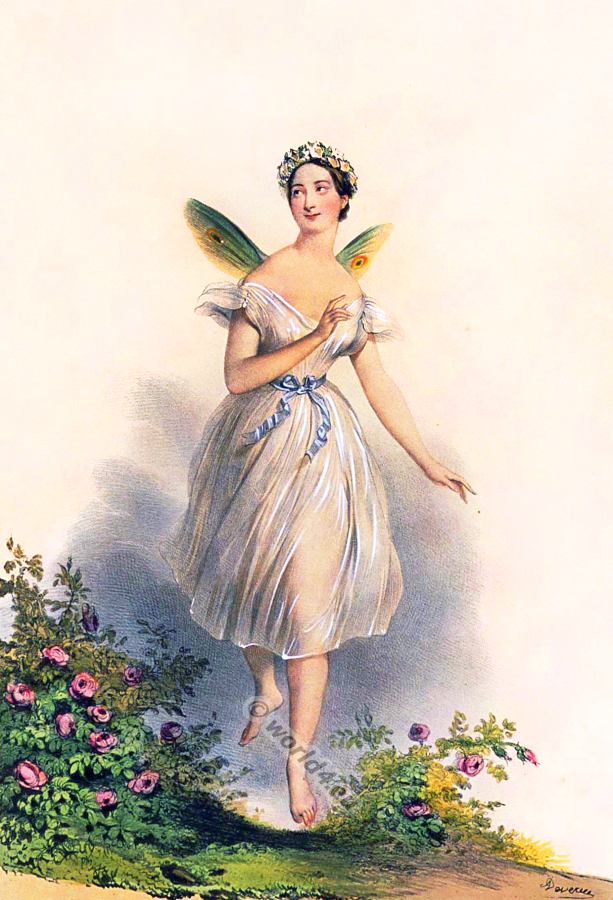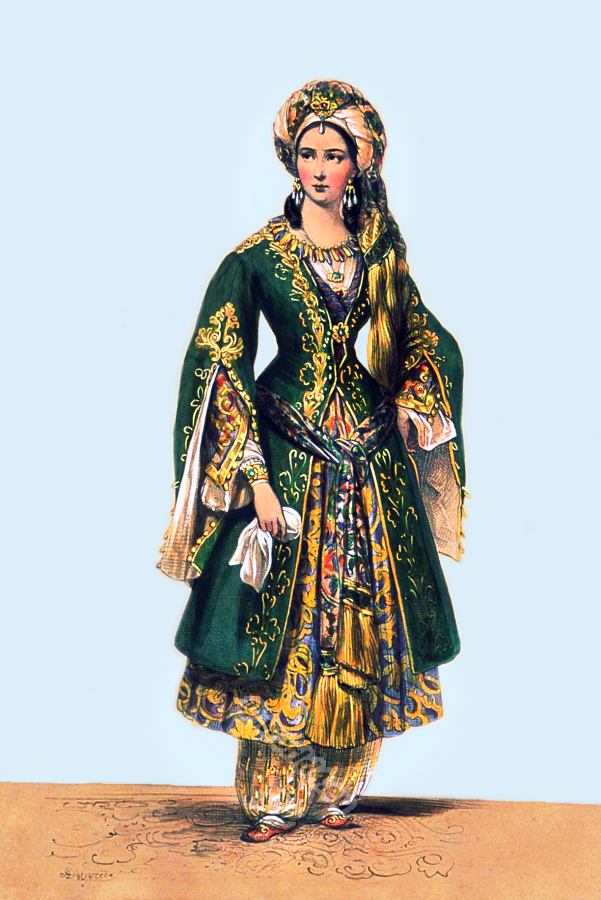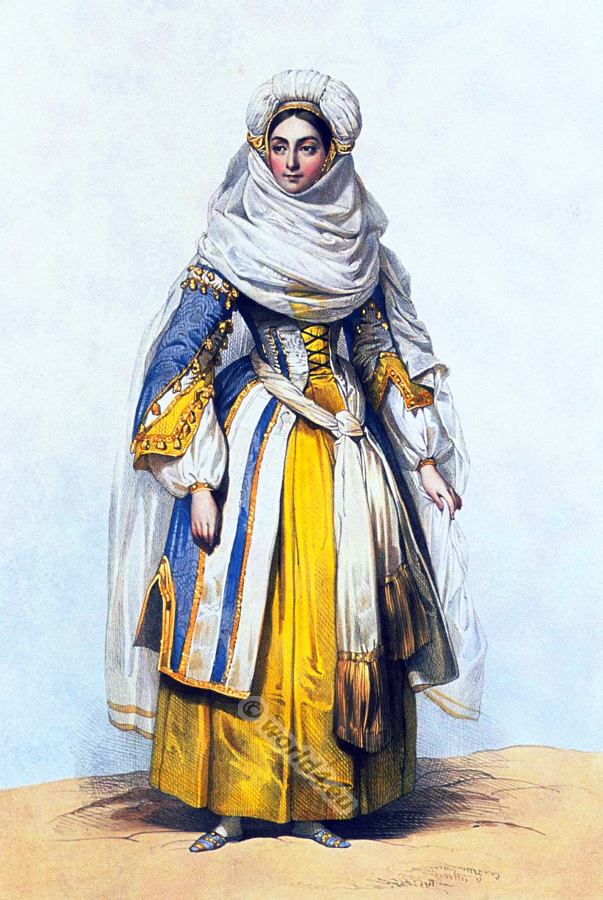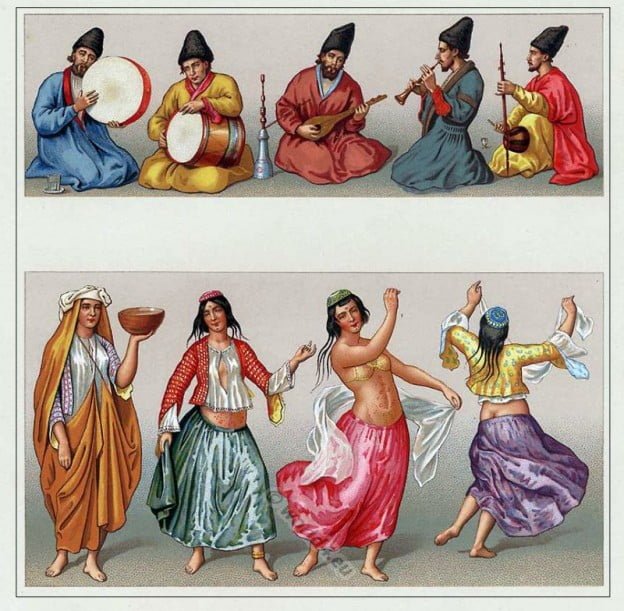Japanese Geisha dancing with fan. Source: Japanese and Indonesians costumes by Emile Gallois. Editeur Henri Laurens. Published Paris 1930.
Tag: Dance costumes
Nô, Noh-men or Omote, jap. 能 楽 robes.
Nō, Noh-men or Omote, Is a traditional Japanese theatre, which traditionally played only by men (danced) and is accompanied by music.
La Sylphide. The ballerina Marie Taglioni dancing the Flore.
Marie Taglioni was the first star of the romantic ballet. It is considered the first master of the tip dance.
Fanny Elssler dances the Cachucha, 1836
Fanny Elssler dances the Cachucha. Le Diable boiteux 1836. In the ballet, “the limping devil” by Casimir Gide.
Élisa Rachel Félix in the role of Roxane “Bajazet” by J. B. Racine.
Élisa Rachel Félix (1821-1858) was a French-Jewish actress and was one of the greatest tragediennes in their time.
Cornélie Falcon. Costume of Rachel in the opera “Jewess”.
Cornélie Falcon (1814–1897). In the picture it shows the Rachel in the opera La Juive, by Jacques Fromental Halévy.
Espagnol Bolero. Spanish Bolero dancer and a guitar player.
The bolero is a Spanish dance which was invented in 1780 by Sebastian Zerezo, a dancer at the Spanish court in Cadiz.
Costume Espagnol, Bolero. Spanish bolero dancers.
The bolero is a Spanish dance, which evolved from Contradanza and Sevillana.
The Motrebs. Persian dancer and musicians, 16th century.
In the lower part of the image three Persian dancers and a servant in the typical costumes are shown. The average dancer wearing a precursor of Raqs Sharqi belly dance costumes.
The Egg Dance at the court of Bhopal.
The Egg Dance at the court of Bhopal,” by Emile Bayard

